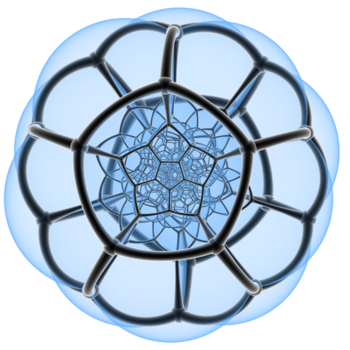How many isosceles triangles can be made in the x-y plane that satisfy all of the following conditions: a. Integer coordinates, b. Area = 9, c. A vertex at the origin?
2 Answers
They are
Explanation:
PREMISE:
I hope that someone will find the time to check this and maybe come up with a smarter (and shorter) way to solve the problem. In the following, I'm going to solve it in a "semi-bruteforce" way.
CONDITIONS:
Let's try to translate the conditions into mathematical language.
Condition [c] says that
hat(A)=hat(O) andAB=BO hat(B)=hat(O) andAB=AO hat(A)=hat(B) andAO=BO
Condition [a] says that
Condition [b] can be translated into a condition on the cross product between
So we translated the problem into mathematical language and we got limitation [1]:
FIRST MANIPULATIONS:
By the Pythagorean Theorem, the following identities hold:
AO^2=x_A^2+y_A^2 BO^2=x_B^2+y_B^2 AB^2=(x_A-x_B)^2+(y_A-y_B)^2
Note: by condition [a] we have that
The last identity can be rewritten as follows (also known as Law of Cosines):
Substituting
This can be rewritten as the identity [2]
FIRST CASE:
We have three cases to analyze. Let's start with the first case:
The identity [2] becomes
By condition [a] we know that
The solutions to the equation obtained above are among the following candidates:
By condition [a]
- If
k=0 , then4BO^2=3^(4-h)+2^4 cdot 3^h is an addition between an odd number and an even number, so the sum has to be odd; this leads to a contradiction (4BO^2 is divisible by4 and therefore even), so the solutions fork=0 have to be rejected. - If
k=4 , we follow an analogous argument to reject solutions of this form. -
If
k=1 , then4BO^2=2 cdot 3^(4-h)+2^3 cdot 3^h . It follows that2BO^2=3^(4-h)+2^2 cdot 3^h is an addition between an odd and an even number, so the sum2BO^2 is not even and this is a contradiction. Then, solutions fork=1 have to be rejected. -
If
k=3 , we follow an analogous argument to reject solutions of this form. - If
k=2 , thenAO^2=2^2 cdot 3^h and4BO^2=2^2 cdot 3^(4-h)+2^2 cdot 3^h i.e.BO^2=3^(4-h)+3^h .
So the only acceptable candidates are the ones for which
AO\ BO ge 18 iff AO^2 \ BO^2 ge 18^2 and substituting we get3^4 + 3^(2h) ge 3^4 and this is satisfied for everyh=0,1,2,3,4 .AO^2 le 4BO^2 iff 2^2 cdot 3^h le 2^2 cdot 3^(4-h)+2^2 cdot 3^h i.e.3^h le 3^(4-h)+3^h , which is true for everyh=0,1,2,3,4 .
So we are left with the following solution candidates (
h=0 , thenx_A^2+y_A^2=AO^2=2^2*3^0=4 and4=0^2+2^2 , so we have(x_A,y_A)=(0,pm 2) or(x_A,y_A)=(pm 2,0) ; moreoverx_B^2+y_B^2=BO^2=3^4+3^0=82 and82=1^2+9^2 , so we have(x_B,y_B)=(pm 1, pm 9) or(x_B,y_B)=(pm 9,pm 1) .h=1 , thenx_A^2+y_A^2=AO^2=2^2*3^1=12 and12 can't be written as a sum of two squared integers.h=2 , thenx_A^2+y_A^2=AO^2=2^2*3^2=36 and36=0^2+6^2 , so we have(x_A,y_A)=(0,pm 6) or(x_A,y_A)=(pm 6,0) ; moreoverx_B^2+y_B^2=BO^2=3^2+3^2=18 and18=3^2+3^2 , so we have(x_B,y_B)=(pm 3, pm 3) .h=3 , thenx_A^2+y_A^2=AO^2=2^2*3^3=108 and108 can't be written as a sum of two squared integers.h=4 , thenx_A^2+y_A^2=AO^2=2^2*3^4=324 and324=0^2+18^2 , so we have(x_A,y_A)=(0,pm 18) or(x_A,y_A)=(pm 18,0) ; moreoverx_B^2+y_B^2=BO^2=3^0+3^4=82 and82=1^2+9^2 , so we have(x_B,y_B)=(pm 1, pm 9) or(x_B,y_B)=(pm 9, pm 1) .
So, considering that in this first case
A=(0,2) andB=(9,1) A=(0,2) andB=(-9,1) A=(0,-2) andB=(9,-1) A=(0,-2) andB=(-9,-1) A=(2,0) andB=(1,9) A=(2,0) andB=(1,-9) A=(-2,0) andB=(-1,9) A=(-2,0) andB=(-1,-9) A=(0,6) andB=(3,3) A=(0,6) andB=(-3,3) A=(0,-6) andB=(3,-3) A=(0,-6) andB=(-3,-3) A=(6,0) andB=(3,3) A=(6,0) andB=(3,-3) A=(-6,0) andB=(-3,3) A=(-6,0) andB=(-3,-3) A=(0,18) andB=(1,9) A=(0,18) andB=(-1,9) A=(0,-18) andB=(1,-9) A=(0,-18) andB=(-1,-9) A=(18,0) andB=(9,1) A=(18,0) andB=(9,-1) A=(-18,0) andB=(-9,1) A=(-18,0) andB=(-9,-1)
SECOND CASE:
We can act in the same way we did in the first case. This produces exactly the same solutions listed in the first case (with
THIRD CASE:
The identity [2] becomes
Since
We have to check two conditions:
AO^2 ge 18 iff 3^h+3^(4-h) ge 18 and this is satisfied for eachh=0,1,2,3,4 .2AO^2 ge AB^2 iff 2 cdot 3^h+2 cdot 3^(4-h) ge 4 * 3^h i.e.3^(4-h) ge 3^h that is satisfied only ifh=0,1,2 .
So we are left with the following solution candidates:
-
If
h=0 , thenx_A^2+y_A^2=AO^2=3^0+3^4=82 and82=1^2+9^2 , so we have(x_A,y_A)=(pm 1, pm 9) or(x_A,y_A)=(pm 9, pm 1) ; moreover(x_A-x_B)^2+(y_A-y_B)^2=AB^2=4 cdot 3^0=4 and4=0+2^2 , so we have(x_A-x_B,y_A-y_B)=(0,pm 2) or(x_A-x_B,y_A-y_B)=(pm 2,0) (from these we will easily derive the possible values forx_B andy_B , given a combination ofx_A andy_A ). -
if
h=1 , thenx_A^2+y_A^2=AO^2=3^1+3^3=30 and30 can't be written as a sum of two squared integers. -
if
h=2 , thenx_A^2+y_A^2=AO^2=3^2+3^2=18 and18=3^3+3^2 , so we have(x_A,y_A)=(pm 3,pm 3) ; moreover(x_A-x_B)^2+(y_A-y_B)^2=AB^2=4 cdot 3^2=36 and36=0+6^2 , so we have(x_A-x_B,y_A-y_B)=(0,pm 6) or(x_A-x_B,y_A-y_B)=(pm 6,0) .
So, considering that in this third case
A=(1,9) andB=(1,-9) A=(1,9) andB=(-1,9) A=(-1,9) andB=(-1,-9) A=(-1,-9) andB=(1,-9) A=(9,1) andB=(9,-1) A=(9,1) andB=(-9,1) A=(9,-1) andB=(-9,-1) A=(-9,-1) andB=(-9,1) A=(3,3) andB=(3,-3) A=(3,3) andB=(-3,3) A=(-3,3) andB=(-3,-3) A=(-3,-3) andB=(3,-3)
CONCLUSION
We proved that there are
Maybe it's easier to check all possibilities of four integers in
Explanation:
1)
2)
3)
4)
5)
6)
7)
8)
9)
10)
11)
12)
13)
14)
15)
16)
17)
18)
19)
20)
21)
22)
23)
24)
25)
26)
27)
28)
29)
30)
31)
32)
33)
34)
35)
36)
37)
38)
39)
40)
41)
42)
43)
44)
45)
46)
47)
48)
49)
50)
51)
52)
53)
54)
55)
56)
57)
58)
59)
60)
61)
62)
63)
64)
65)
66)
67)
68)
69)
70)
71)
72)
Step one:
Rotating by
Step two:
I meant
Rotating by
Again,
Step three:
Consider the ball centered at
Rotating by


